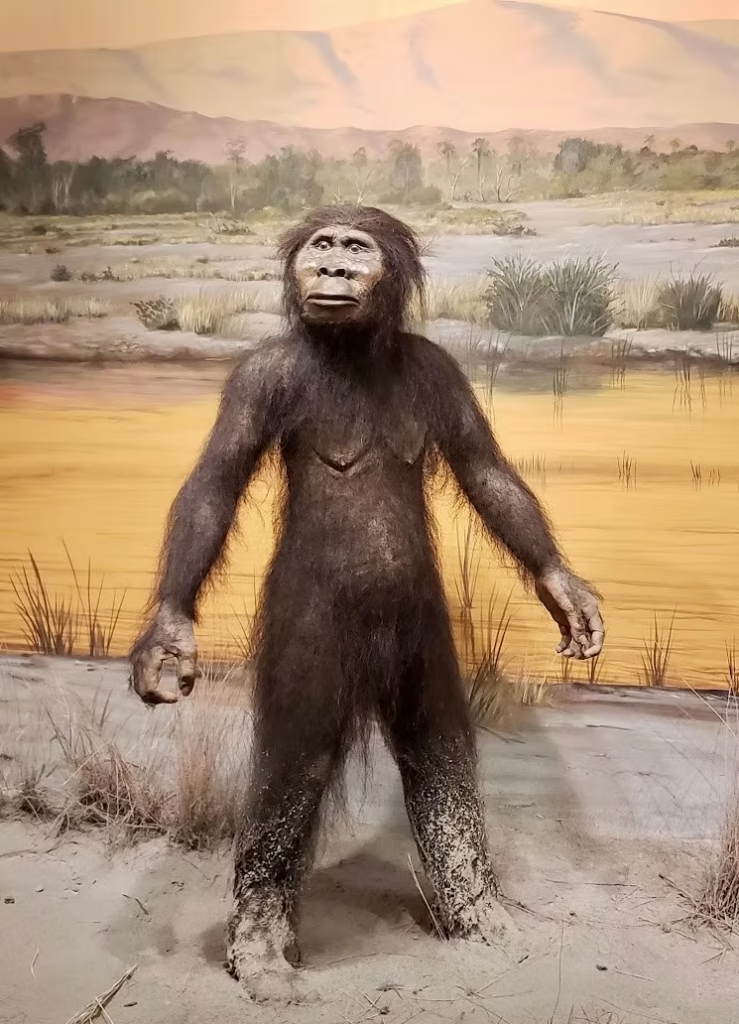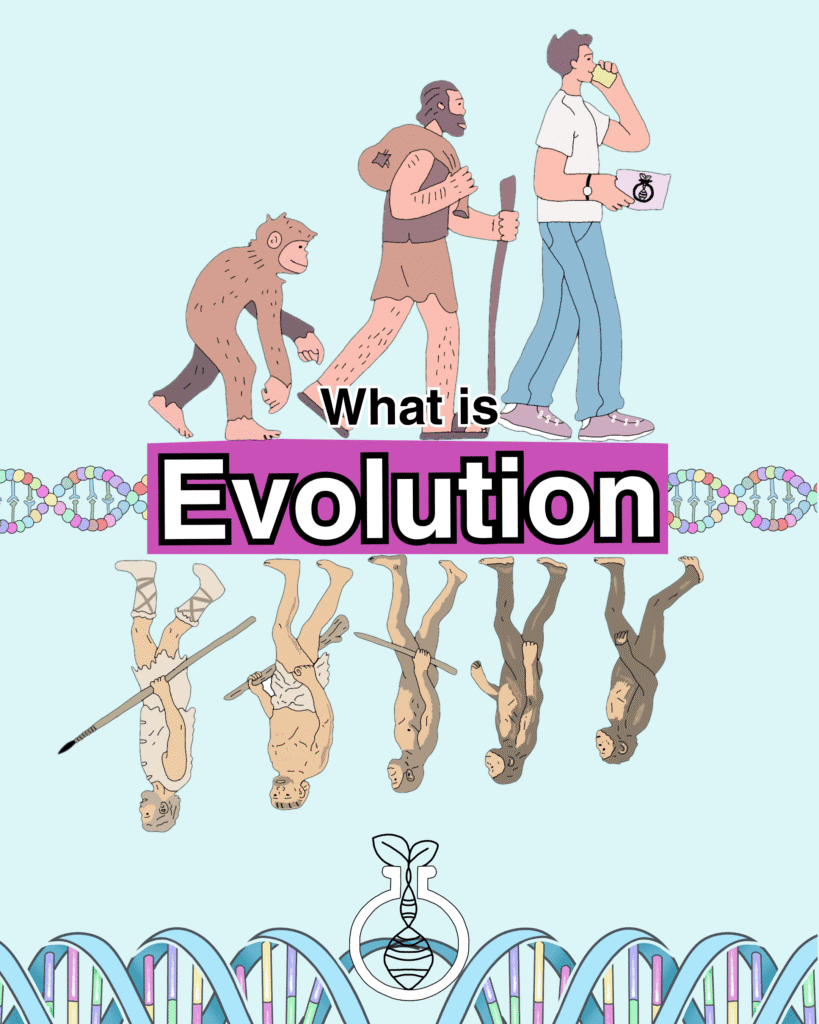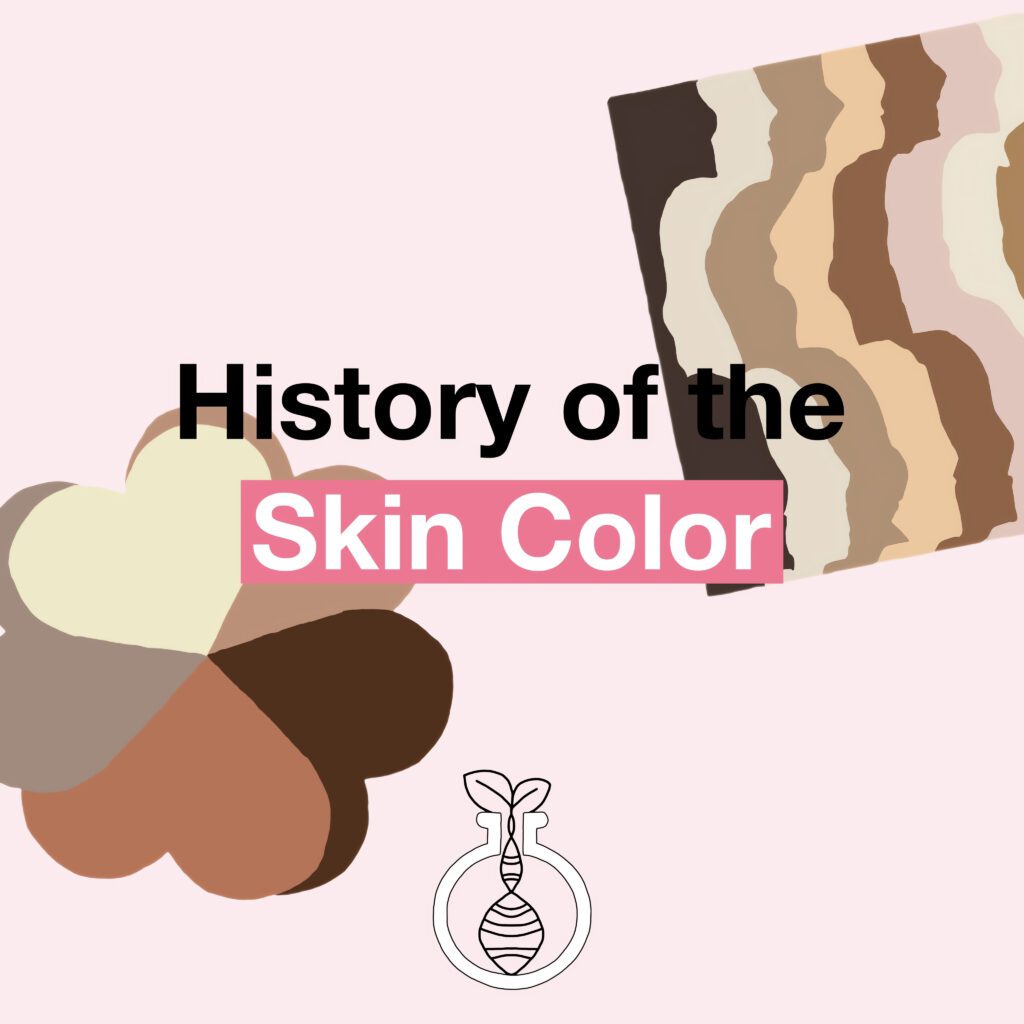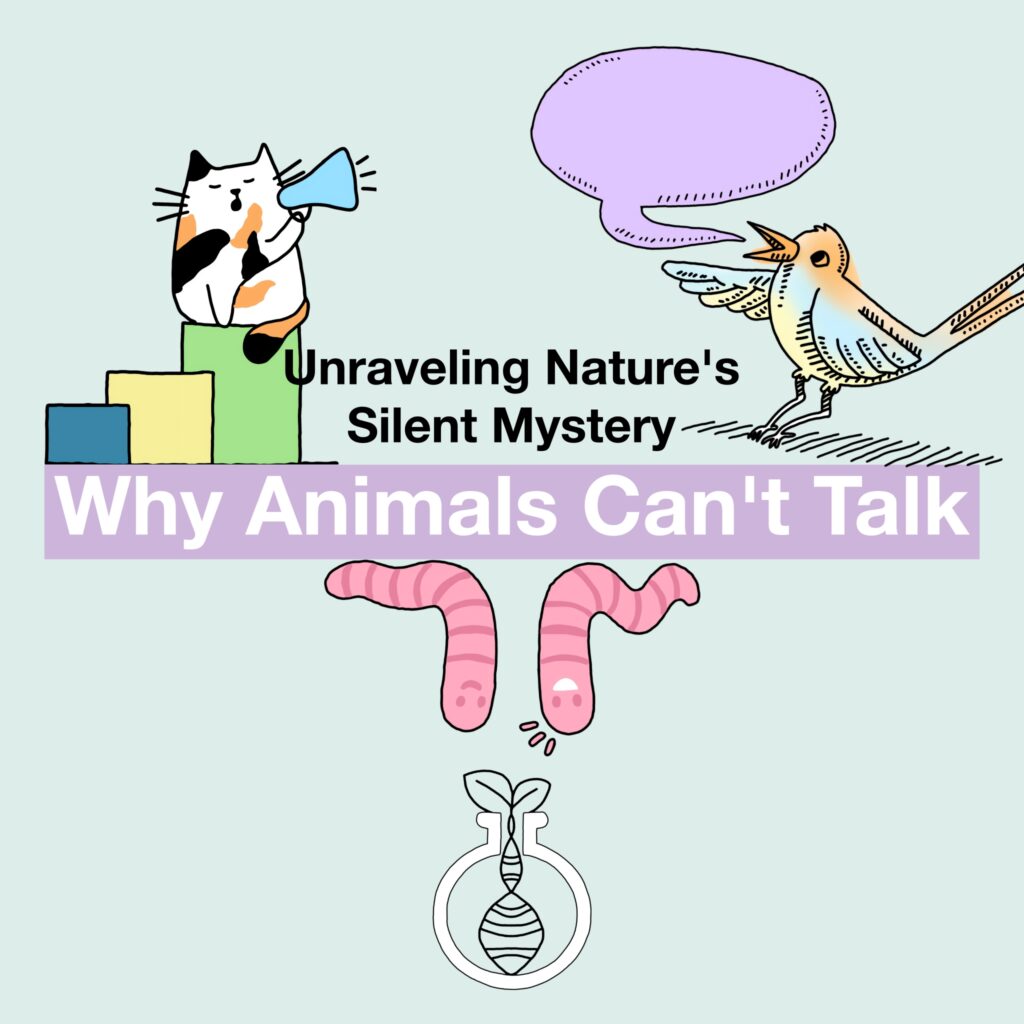Let’s rewind the clock, not by centuries or millennia, but by millions of years. Imagine the Earth not as we know it, but as a raw and wild planet, home to creatures who would one day give rise to us.
Human evolution is the grand, unfinished story of how Homo sapiens, modern humans, came to be. It’s not just about fossils or missing links; it’s about us, right now. It’s the biological drama of survival, adaptation, and transformation, written into every cell of our bodies and etched across ancient bones buried beneath our feet.
This is not a straight path, but a labyrinth of lineage, full of dead ends, side branches, bold experiments by nature, and surprising turns. Human evolution is about how we walked, climbed, hunted, built, migrated, loved, fought, and dreamed our way into becoming the most complex species on Earth.

So, what does it mean to be human? That’s the question evolution helps us answer, not with one truth, but with an unfolding narrative that stretches back over 6 million years.
Our Place in the Primate Family Tree
Take a look in the mirror. Behind your eyes, your opposable thumbs, your expressive face, your upright stride, lies the signature of primates. Yes, we’re part of the ape family, cousins to chimpanzees, gorillas, and orangutans. Our DNA tells the story loud and clear: we share about 98.8% of our genes with chimpanzees.
We belong to the biological group known as primates, an order that includes monkeys, apes, and humans. But within this family, we’re part of a very special branch called the hominins, the group that includes all species more closely related to humans than to chimps. Here’s the key idea:
- We didn’t evolve from chimpanzees.
- Instead, humans and chimps share a common ancestor who lived around 6–7 million years ago. From that split, two journeys began — one leading to modern apes, and the other to us.
So no, we’re not “just apes with smartphones”, we’re evolution’s oddest gamble, armed with language, tools, emotions, and dreams, but still biologically rooted in the primate world.

The Big Questions: When, Where, and How?
Human evolution asks the big, bold, beautifully messy questions:
🕰️ When did we first appear? Was there a single “birthplace” moment for our species, or did evolution brew us slowly over time?
📍 Where did it all begin? Spoiler: All evidence points to Africa as the cradle of humanity. But from there, we’ve walked every corner of the globe.
🔧 How did we evolve? Through a mosaic of changes: bones growing lighter, brains growing larger, behaviors growing richer. Each adaptation a response to shifting environments, survival pressures, and, sometimes, just evolutionary luck.
And here’s a twist: Human evolution isn’t done. It’s not ancient history. We are still evolving, right now. With every generation, natural selection and genetics keep shaping us in ways we’re only beginning to understand. This article will guide you through this tangled tale, from tree-dwelling apes to tech-building humans, from footprints in the savannah to CRISPR in a lab.
Are you ready to walk with your ancestors?
The Earliest Ancestors and Key Adaptations
Let’s rewind the evolutionary tape to about 7–10 million years ago, during the Miocene Epoch, a time when apes roamed forests from Africa to Asia. Climate was shifting, forests thinning, and new environments like open grasslands were emerging. This was the stage for divergence, the evolutionary “fork in the road” that would eventually lead to humans.
In this tangled forest of species, a mysterious common ancestor split into two evolutionary branches:
- One branch led to modern chimpanzees and bonobos.
- The other gave rise to hominins, our direct ancestors.
We don’t know this ancestor’s name, but we know their story through fossils like Sahelanthropus tchadensis (found in Chad) and Orrorin tugenensis (Kenya), dating back over 6 million years. These weren’t humans, far from it. But they show early signs of something incredibly important: upright walking.

These early hominins still had ape-like brains and strong climbing arms, but their leg bones hint at bipedalism, a revolutionary adaptation that would change everything.
The Dawn of Bipedalism: Walking Upright
Standing up might not sound like a big deal. But in evolutionary terms, it’s as radical as growing wings. Bipedalism, walking on two legs, is one of the most important milestones in our entire lineage. Why? Because it freed up our hands, changed our energy use, shifted our perspective, and opened the door to entirely new behaviors.
Let’s break it down:
Fossil Evidence
One of the most famous early bipeds is Australopithecus afarensis, best known through the fossil nicknamed “Lucy”, discovered in Ethiopia in 1974. Her skeleton, 3.2 million years old, shows a creature that:
- Had curved fingers and long arms (still good for climbing).
- But also had pelvis and leg structures perfect for walking upright.
And then there are the Laetoli footprints, 3.6 million years old, perfectly preserved in volcanic ash in Tanzania. They show two hominins walking side by side, on two feet. A quiet moment turned into a fossilized memory.

Anatomical Changes
To walk upright efficiently, evolution had to redesign the body:
- Shortened pelvis for balance
- Angled femur (thigh bone) to center weight
- Arched feet for support
- Spine curves for shock absorption
- Foramen magnum (where the spine meets the skull) moved under the skull to hold the head upright
These tweaks took millions of years, and weren’t perfect at first. Back pain? Knee issues? You can thank this upright gamble for those.
Theories of Why Bipedalism Evolved
Scientists still debate why bipedalism evolved. Some key theories include:
- Energy efficiency: Walking on two feet uses less energy over long distances than walking on all fours.
- Heat management: Standing tall reduces sun exposure and helps cool the body.
- Freeing the hands: To carry tools, infants, or food.
- Better visibility: To spot predators or distant resources in open landscapes.
The truth? It was likely a combo of these factors, with bipedalism offering enough advantage to persist across generations.
Early Hominins: Australopithecus and Beyond
With bipedalism in place, the hominin experiment continued. Over the next few million years, a variety of species emerged, each playing their part in the evolutionary mosaic.
Australopithecus: The Famous Ancestor
The genus Australopithecus (“southern ape”) thrived from about 4 to 2 million years ago. They had:
- Small brains (around 400–500 cm³)
- Large faces and teeth suited for chewing tough vegetation
- Fully upright posture and efficient walking

They were still part-ape, part-human, but they were survivors, adapting to varied environments, using rudimentary tools, and likely living in small social groups. Some well-known species include:
- Australopithecus afarensis (like Lucy)
- Australopithecus africanus (found in South Africa)
- Australopithecus sediba (a fascinating possible transitional form)
A Complex Family Tree
By this point, evolution was experimenting with different strategies:
- Some hominins became more robust (strong jaws, large chewing muscles) like Paranthropus.
- Others became more gracile (lighter build, possibly more agile), like the ancestors of the genus Homo.
This period wasn’t about a single straight line of progress. Think of it as a tree with many branches, most of which went extinct, but all of which helped shape the final path that led to us.
The Rise of the Genus Homo
The Handy Man: Homo habilis and Early Toolmaking
Let’s start with a name that might ring a bell: Homo habilis, Latin for “handy man.” Discovered in the 1960s, Homo habilis lived around 2.4 to 1.4 million years ago in East Africa. And while they didn’t leave behind a diary, they did leave something revolutionary: tools.
These were the first members of our genus to be caught red-handed with stone tools, choppers, scrapers, and flakes. It might not sound like much, but this was technological magic for the time.

Think about it:
- A rock becomes a sharp edge.
- A sharp edge becomes a butcher’s knife.
- A butchered animal becomes more calories, more protein, more brain power.
This era, known as the Oldowan tool culture, marks a key turning point. These hominins didn’t just survive, they started manipulating their environment, shaping nature to meet their needs.
And brain size? Homo habilis had brains around 600–700 cm³, larger than Australopithecus and heading in the direction of Homo sapiens. Bigger brains mean more learning, more social complexity, more adaptability.
Tools weren’t just tools, they were mental breakthroughs, signaling that a new kind of creature was emerging. A creature that would eventually explore and dominate every continent on Earth.
Out of Africa: Homo erectus and Global Expansion
Now, meet Homo erectus, arguably one of the most successful species ever to walk the planet. Emerging around 1.9 million years ago, Homo erectus was:
- Taller (up to 6 feet)
- Stronger and more modern in body shape
- Sporting an even larger brain (750–1,100 cm³)
- And crucially… the first to leave Africa
That’s right, these were the first global explorers, migrating out of Africa and into Asia, Europe, and beyond. Fossils of Homo erectus have been found in Indonesia, China, Georgia, and Europe, making them true citizens of the world.

This expansion wasn’t just about wandering. It was about survival, adaptation, and mastery of new environments. In colder regions, they likely used:
- Fire to stay warm and cook food
- More advanced tools (like hand axes)
- Teamwork to hunt and protect themselves
Fire is especially significant. It changed the menu, allowing for cooked meat, which is easier to chew and digest. That means more energy, fewer hours chewing, and more time for social interaction, planning, and bonding.
This era also likely saw the emergence of rudimentary language, the beginnings of complex communication, sharing knowledge, and building culture.
So, imagine it: these weren’t just ape-like creatures huddled in caves. They were organized, resilient, and innovative, capable of surviving droughts, cold, predators, and the unknown.
The Rise of Larger Brains and Complex Behavior
The evolution of the human brain is perhaps the most astonishing leap in the natural world. Over a few million years, our ancestors’ brains tripled in size, allowing for:
- Advanced problem-solving
- Abstract thinking
- Memory and learning
- Social negotiation
- Planning for the future

Why did brains grow? Several theories exist:
- Meat and cooking provided the energy necessary to fuel bigger brains.
- Tool use created a need for better coordination and foresight.
- Social living increased the need for empathy, deception, cooperation, and memory (keeping track of allies and rivals).
- Sexual selection favored cleverness — brains became attractive.
With cognitive advancements came culture, early forms of art, symbolic thinking, burial rituals, and perhaps even early religions.
In short: evolution wasn’t just shaping bones, it was sculpting minds. And those minds would soon start painting caves, crafting jewelry, and dreaming of the stars.
The Emergence of Modern Humans
Before we arrived, the world was already home to other human cousins, remarkable species that shared the genus Homo with us and even some of our DNA. Let’s meet two of them:
The Story of Homo sapiens : Our Own Species
- Lived across Europe and western Asia from ~400,000 to 40,000 years ago.
- Stocky, strong, cold-adapted — Ice Age warriors built for endurance.
- Not just brawny — they made tools, controlled fire, wore clothes, buried their dead, and may have spoken language.
So, where do we come in?
Homo sapiens, that’s us, appeared in Africa around 300,000 years ago, likely evolving from earlier species such as Homo heidelbergensis.
Unlike our archaic cousins, we had:
- A high, rounded skull with a large brain (~1,350 cm³)
- A gracile (lighter) build
- Complex symbolic thinking and creativity

But we didn’t stay put. Around 70,000 years ago, Homo sapiens began to migrate out of Africa, following rivers, coastlines, and climate corridors. Within a few tens of thousands of years, we had reached:
- The Middle East
- Europe and Asia
- Australia (~65,000 years ago)
- The Americas (~15,000–20,000 years ago)
This “Great Human Migration” was a massive expansion event, driven by climate change, population pressures, and curiosity. And as we moved, we adapted:
- In colder regions: lighter skin to absorb more sunlight.
- At high altitudes: greater lung capacity and oxygen use.
- In tropical zones: darker skin to protect against UV radiation.
All this from one species, highly plastic, adaptive, and innovative.
The Cognitive Leap: Language, Culture, and Symbolic Thought
And now comes perhaps the most magical part of human evolution, the moment our ancestors started thinking in symbols, telling stories, and dreaming.
Archaeological evidence shows that by 100,000 years ago, we were:
- Making jewelry out of shells and bones
- Creating cave art in Europe and Indonesia
- Carving figurines, musical instruments, and totems
- Burying our dead with care and ceremony
- Developing language — though we can’t fossilize speech, the anatomy for it (like the hyoid bone and brain structure) was in place

This “cognitive revolution” was a firework explosion in the human mind, giving us the capacity for abstract thought, imagination, planning, religion, politics, and cooperation on a scale never seen before in nature.
Language was the glue, it let us teach, organize, gossip, innovate, and pass down knowledge across generations. This leap didn’t happen all at once, and it wasn’t restricted to one region. It unfolded in parallel in multiple human groups, driven by need, environment, and social dynamics.
And so, by around 40,000 years ago, Homo sapiens were not just surviving, we were thriving, building societies, crafting culture, and preparing to change the world forever.
Your Personalized Evolutionary Story: What It All Means for You
Imagine your DNA as an ancient book, not one written in ink, but in four molecular letters: A, T, G, and C. Each page tells a tale. And together, these tales span from ancient fish that once wriggled through shallow seas… to bipedal apes walking under the African sun… to you, scrolling through this article.
Thanks to revolutionary tools like genome sequencing, we now know that:
- You share ~99.9% of your DNA with every other human being on Earth.
- You also share ~98.8% with chimpanzees, our closest living relatives.
- And fascinatingly, 1–4% of your genome may come from Neanderthals, and up to 5% from Denisovans (if your ancestry includes Asian or Oceanic regions).

These fragments of archaic DNA aren’t just trivia. They influence things like:
- Immune responses to pathogens
- Skin and hair traits
- Altitude adaptation in certain populations
- Even risk for some diseases
Your genome is like a mosaic map of ancient survival strategies, evolutionary souvenirs passed down through time.
🧬 Modern Tools, Ancient Stories:
- 23andMe, AncestryDNA, and others allow you to explore these inherited tales
- You can trace your lineage, see where your ancestors came from, and understand your genetic predispositions
But more than curiosity, this is evolution in your hands. A reflection of migrations, natural selection, adaptations, and chance, all carved into the double helix inside every cell of your body.
Evolution is Still Happening, Right Now, Within Us
You are not the final draft. Evolution didn’t end when we became Homo sapiens. It’s happening right now, silently sculpting our future.
Yes, you are evolving.
Here’s how:
🧠 Our Brains Are Changing
- The demands of the digital world may be reshaping attention spans, memory, and learning
- Social structures and technologies could influence brain development and behavior
💉 Medicine is Changing Selection
- Thanks to modern healthcare, traits once considered
- “disadvantageous” are no longer being weeded out
- People with genetic disorders now live longer, fuller lives — and pass on their genes
🌍 Climate and Environment
- Rising temperatures, pollution, and global food changes are applying new pressures that may shape our bodies in generations to come
💡 Culture is Evolution’s New Playground
- Unlike genes, ideas evolve at lightning speed
- Language, memes, fashion, tech, morality — all subject to selection, mutation, replication
Human evolution isn’t just history. It’s your story. Still being written.
Let it inspire you.
Let it humble you.
And above all, let it guide you forward.
We got inspired by those articles to create this content


My name is Ali Emre Cabadak, a dedicated biology enthusiast currently pursuing my studies at Marmara University, where I am majoring in Bioengineering. As a passionate advocate for scientific discovery and innovation, I am the founder of Biologyto. My goal is to bring the wonders of biology closer to everyone and inspire a new generation of thinkers and innovators. Through Biologyto, I aim to write scientific articles that delve into the fascinating world of biology, sharing insights and discoveries that inspire curiosity and innovation.





